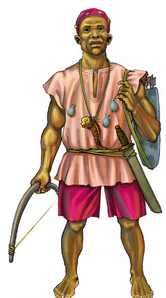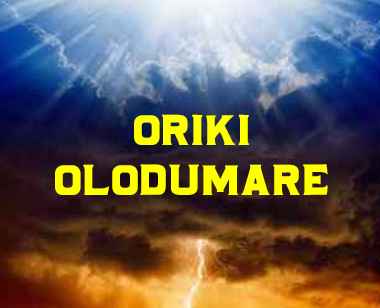
support@yorubalibrary.com
+2348073529208, 07038599574

In Yoruba mythology, the celestial bodies hold significant cultural and spiritual meanings. Among these, the myth of the Sun and the Moon is one of the most fascinating tales, explaining the origins and relationship between these two powerful entities. This myth provides insights into Yoruba cosmology and the way the Yoruba people understand the universe and natural phenomena.
The Story of the Sun and the Moon
According to Yoruba legend, the Sun and the Moon were once married and lived together on Earth as husband and wife. The Sun, known as Òorùn, was a fierce and fiery entity, while the Moon, called Òsùpá, was gentle and calming.
The Conflict & Separation
The Sun and the Moon were deeply in love, but their relationship was marked by conflict due to their differing natures. The Sun's intense heat and brightness often caused discomfort to the Moon, who preferred coolness and tranquility. Despite their love, the Sun's fiery temperament led to frequent arguments and tension.
One day, the conflict between the Sun and the Moon reached its peak. The Moon, unable to bear the Sun's scorching presence any longer, decided to leave and seek solace in the sky. The Sun, realizing the impact of his intense nature, reluctantly agreed to let the Moon go. They both ascended to the heavens, taking their places as celestial bodies.
Roles in the Sky
In the sky, the Sun and the Moon found their unique roles. The Sun became the ruler of the day, providing light and warmth to the world. His presence marked the time for work, growth, and activity. The Moon, on the other hand, became the queen of the night, casting a soothing light that brought peace and rest. Her gentle glow guided travelers and provided comfort during the darkness.
Despite their separation, the Sun and the Moon remained connected through the cycle of day and night. Their movements created a rhythm that governed the natural world. The Sun's rise and set marked the beginning and end of the day, while the Moon's phases influenced the tides and illuminated the night sky.
Symbolism and Cultural Significance
The myth of the Sun and the Moon carries profound symbolism in Yoruba culture. It represents the balance between opposing forces—heat and coolness, day and night, activity and rest. The story also highlights the importance of harmony and the necessity of accepting and understanding differences.
Influence on Festivals and Rituals
The Sun and the Moon are honored in various Yoruba festivals and rituals. The Ìṣẹ̀ṣe festival, for example, celebrates the harmony between the celestial bodies and their influence on agriculture and daily life. Offerings and prayers are made to ensure a balance between the Sun's strength and the Moon's serenity.
Lessons from the Myth
The myth of the Sun and the Moon teaches valuable lessons about relationships, balance, and the natural order. It reminds us that even in separation, there can be unity and harmony. The story encourages us to appreciate the unique qualities of others and to find ways to coexist peacefully despite our differences.
Conclusion
The Yoruba myth of the Sun and the Moon is a captivating tale that reflects the richness of Yoruba mythology and cosmology. Through this story, we gain a deeper understanding of the cultural values and beliefs that shape the Yoruba worldview. The Sun and the Moon, though separated, continue to influence our lives, reminding us of the enduring connection between all elements of the universe.

Learn about the Yoruba concept of Ìwà Pẹ̀lẹ́ (good…

Learn special praises for Divine Being and Creator…